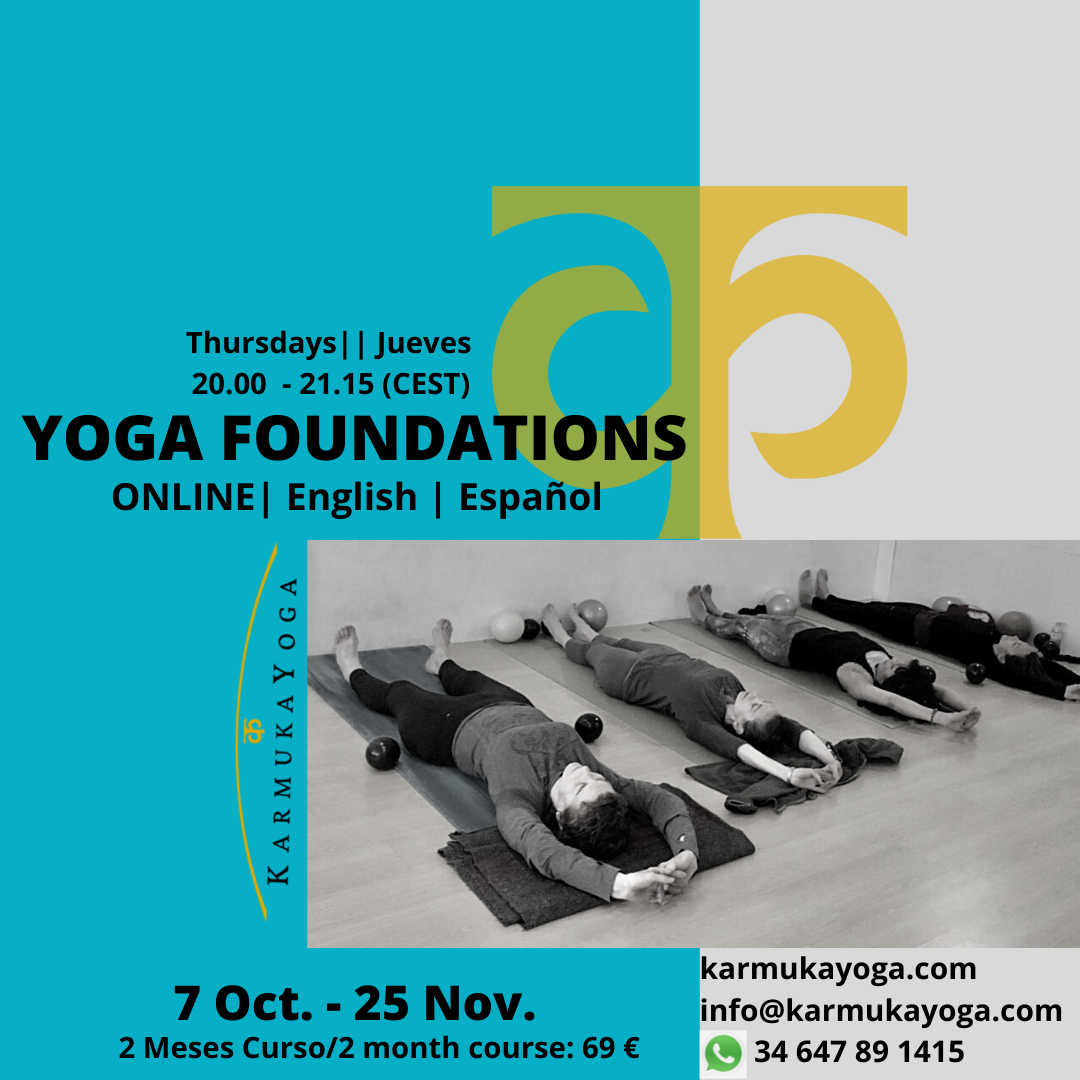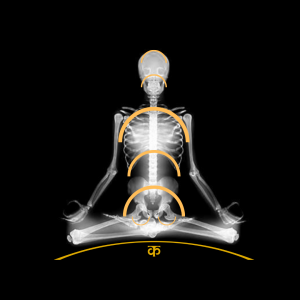Foundations of Yoga Asana
“While you are disturbed by your body, your nerves will become disturbed and you cannot concentrate the mind” (Vivekananda Patanjali Sutras, 2: 46-48)

Yoga Asana is one part of the 8 limbs of Yoga. It is often interpreted as Yoga posture. These Yoga postures are built upon spiral and arch forms. Learning how to maintain the integrity of these spirals and arches of the muscular and skeletal structure within Yoga postures (asana) is fundamental for Yoga beginners and advanced practitioners alike. This somatic knowledge is what makes Yoga therapy and Yoga for beginners and recovery effective while ensuring all levels of Yoga practitioners avoid injury.
On a psychological level, during the practice of Yoga Asana, the body becomes a doorway to the present, a tool for focusing and releasing past impressions (Samskaras) stored in the mind and body (Patanjali Yoga Sutras 4:26). As students focus upon the minute details of each pose the Vrittri (activity) of the mind quiets, the nervous system begins to relax, physical pain starts to dissipate while the past and future disappear into the the here and now of internal observation (Pratyhara) of each pose.
Asana is often interpreted as posture though it literally means ´stable seat´. The practice of Yoga postures ie. Asana should be focused upon stability NOT complete external execution of a pose. In the practice of Yoga Asana and Pranayama, even the most minute adjustments can help a student more fully enjoy the physical and psychological benefits of Yoga. Pain and discomfort should be communicated and modified. Remember, the very name ASANA means stable seat NOT nose to toes.
The purpose of Asana is to prepare the body for Pranayama and the experience of Dharana, Dhyana and Samahdi. At first there might be great resistance as the mind and body are forced to create new neuronal pathways and clean up past tension and pain stored in the body. Nonetheless, as a student perseveres in their practice, stability in the body will increase and consequently greater stability in breath (Pranayama) and mind (Dhyana, Dharana, Samahdi) will manifest.
How is the stability of Yoga Asana achieved?
The strongest and most stable form found both in nature and architecture is the arch, hence the name, Karmuka Yoga. Karmuka means Arch in Sanskrit. The geometric form of the arch achieves strength and STABILITY by creating a perfect balance between two forces in opposition. In all her great engineering wisdom, nature created the human body with 6 main arches that sit one on top of another and support each other through opposing (isometric) action.
- Foot Arches
- Pelvic Arch
- Inferior Thoracic Cage Arch
- Superior Thoracic Cage Arch
- Arch of the Occipital/Pallette
- Cranium
In observing the human skeleton the 6 arches are placed in a way to create more space through the central channel of the torso where the internal organs of digestion and assimilation, breath and the nerve channels of the spinal column and vagus nerve complete their functions. When one of these 6 arches becomes misaligned or flattened as a result of accidents, traumas, stress, genetics or postural habits, the consequence is a lack of space which results in various forms of discomfort and pain and an over all reduced functioning of the organism.

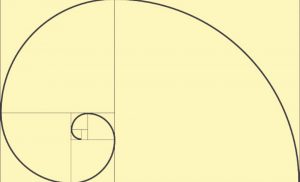
These 6 arches of the skeletal system are supported by the spiraling internal isometric action of the muscular system and begin in the feet. The stability in the feet will create stability in the pelvis, the fulcrum of our movement and balance. Stability in the inferior arches of the feet and pelvis will then translate into fluid and stable movement further up the channel of connection in the superior arches of the thoracic spine, occipital lobe and the cranium. The strength of these arches is achieved through internal spiral movement, creating a perfect balance between two opposing tensions.
Spirals: The building blocks of nature
“There is no such thing as motion in a straight line” (Vivekananda Patanjali Sutras)
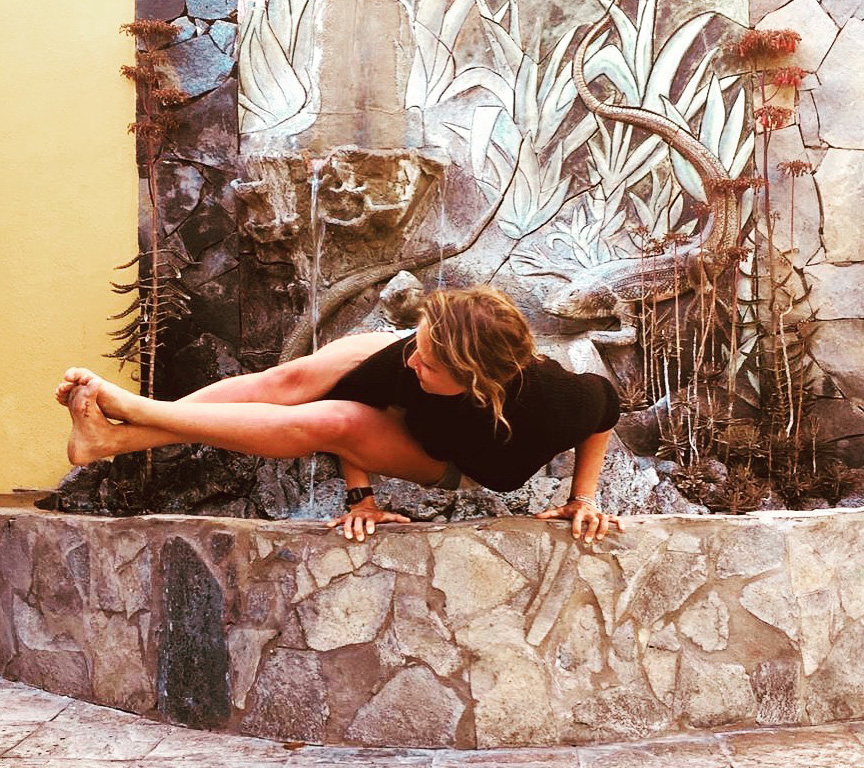
Spirals form the basis of stable movement and is a pattern that is repeated throughout all of nature from the golden ratio found in flowers and shells to our very DNA. Prana moves up along the shushuma (spine energy channel) in spirals along the negatively charged energy channels of the ida and positively charged pingala. The serpent of Kundalini sits spiraled up at the base of the spine, waiting to unwind via the practice of Yoga.
For example in Uttita (EXTENDED) Trikonasana (Three angles) spiraling tripod action of the feet press down and out in opposing directions lift the arch of the foot and then bring the energy up into the arch of the pelvis. This opening of the pelvis opens the sacrum (the seat of vital energy) to allow the student to then lengthen up along the spine through the arches of the ribcage then into arch of the skull. It is this lengthening of the spine and the opening of the ribcage into 360 degrees of internal space that removes tension, improves breath and creates clarity in the mind.
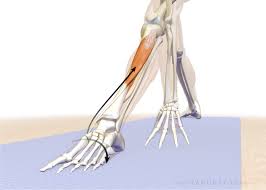
In Yoga Asana the concept of opposing tensions to create both flexibility and stability is found in all poses (asana). The main goal of each Asana is to create more length and extension along the spine and width through the arches of the thoracic spine. The purpose of this daily practice of extension and width in the physical form of the body allows for deeper fuller breaths, a more relaxed nervous system as well as a more stable and flexible physical structure. The end result is an overall better functioning of the entire mind/body complex. This improvement in the physical and pranic (breath) structure enables the practitioner to sit for meditation without distraction and translate this practice of focus relaxed attention into their every day lives.
Internal Action vs. External Exposition
Thanks to social media and a pop cultural obsession with the beauty of external physical forms, the real transformative power and therapeutic benefits of Yoga are often lost as students are quickly guided between one physical form to another without any time or guidance to explore internal actions and sensations. The art of relaxed action is lost as students are pushed to complete physical forms based upon what they see rather than what they feel. The opposite of this would be doing a very relaxed practice or a kind of oasis fair practice which brings little awareness to how the structure of the physical form directly impacts the movement of breath and functioning of the nervous system. A common result of this kind of unconscious practice are physical injuries as well as an increase in agitation or reduction in energy levels.
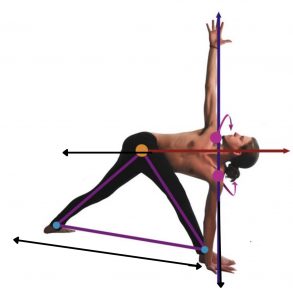 Stability = Balance
Stability = Balance
The science of Yoga Asana is built upon observing the stability of the skeletal structure via the matinance of the 6 aforementioned arches. This is achieved via the internal spiraling isometric actions of the muscular system. Awareness of the inherent forces in opposition of these arches and spirals is what brings BALANCE and UNITY to the body, breath and mind. This balance and unity of forces in opposition is quite literally the definition of Ha (sun/masculine principal/pingala) Tha (moon/feminine principal/ida) Yoga (Union)
When a student first begins the practice of Karmuka Yoga it is common to feel both amazed and overwhelmed by the breadth of new information and sensation that they begin to experience. However, with discipline and practice it becomes apparent that the internal actions of the most basic forms of Yoga Asana are repeated again and again in the more complicated forms. Coming to understand this somatic experience of internal action of spirals and arches enables a student to perform Yoga Asana with greater stability and enjoyment. This results in a deeper better breath and internal awareness. Consequently this internal awareness helps to calm the nervous systems, reduce levels of stress and enable the disciplined student be more effective and aware in their daily activities and interactions.
Come and feel for yourself and in your own body the power of Karmuka Yoga by signing up for the Karmuka Yoga Foundations class. This is an ideal class for anyone who:
- Wants to start Karmuka Yoga classes
- Has a lot of stiffness or lack of stability
- Is recovering from injury or experiencing restrictions in mobility
- Desires a more therapeutic yoga approach
- Wants to clarify their understanding of the inner actions of Yoga Asana
